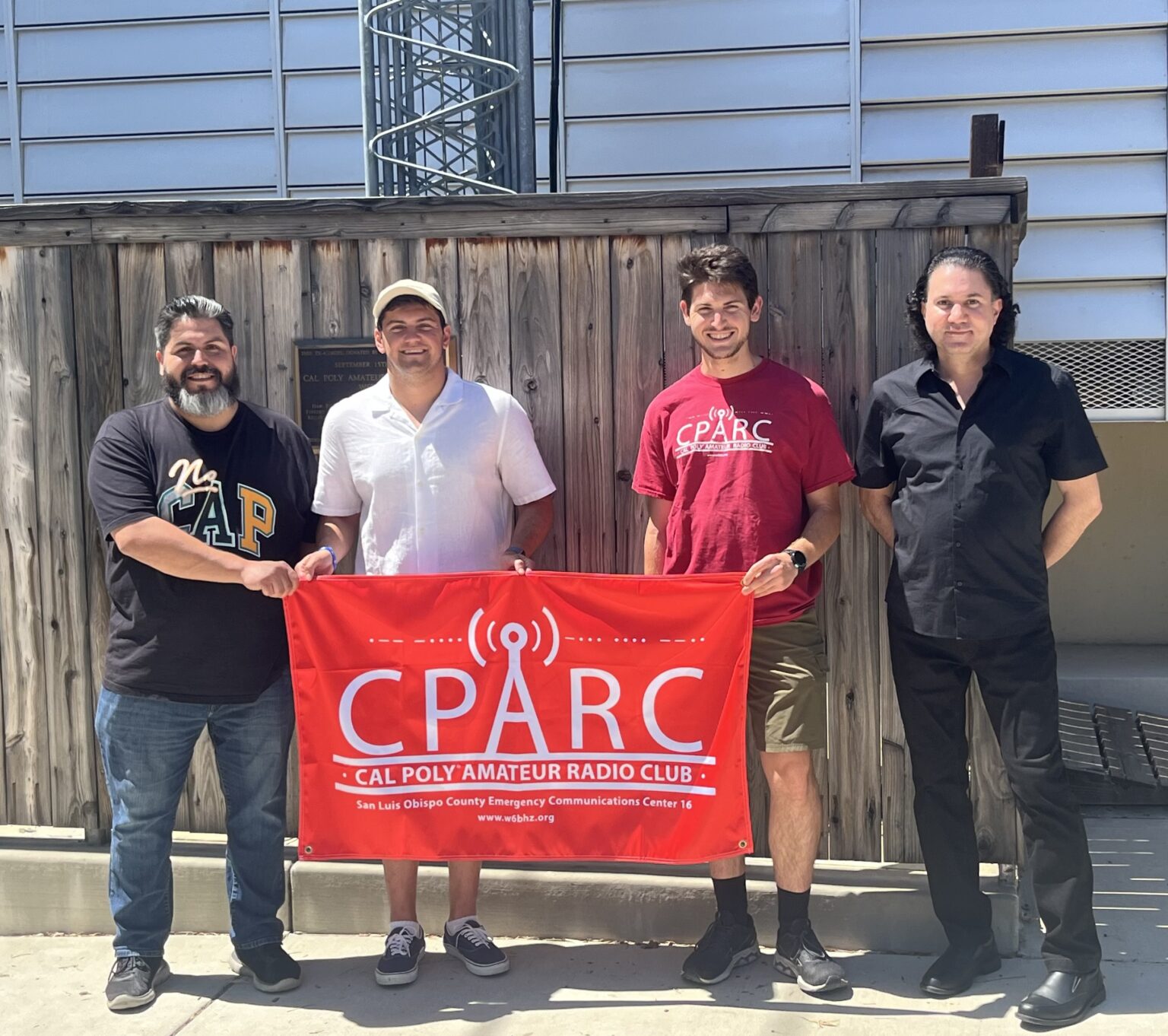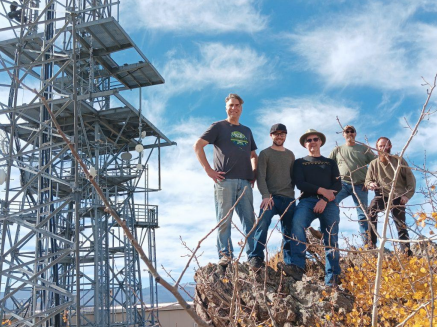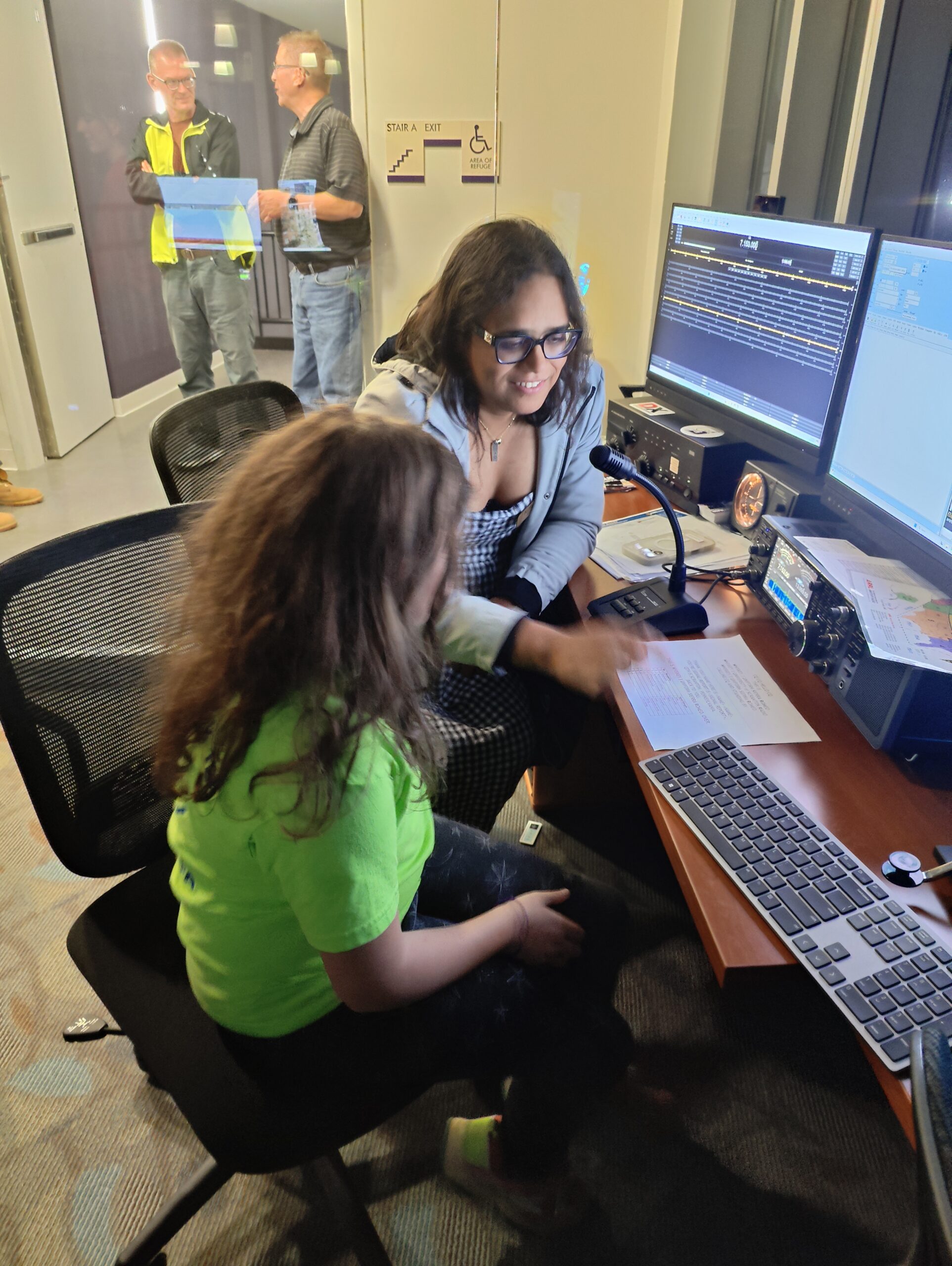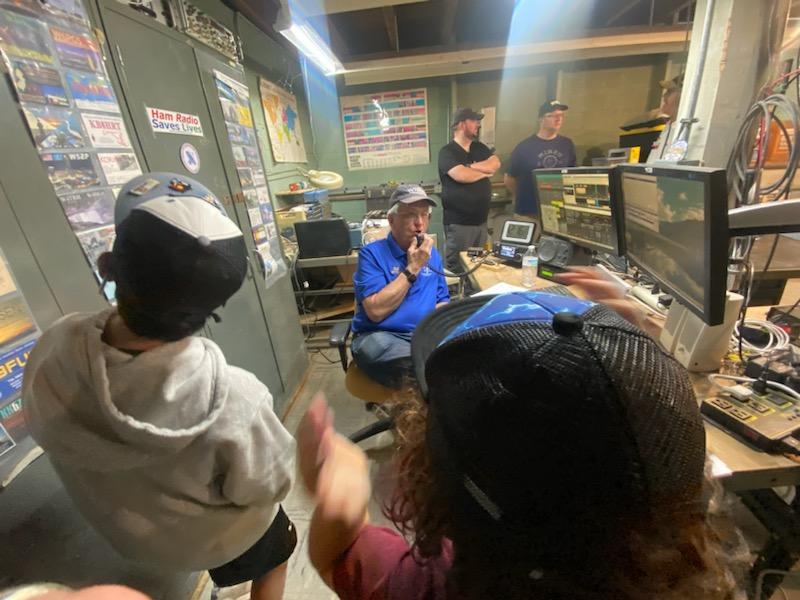Grantee Roundup, February 2025
At ARDC, we’re always interested in hearing about the work our grantees share with us. Below are some recent updates from Cal Poly, SkyHubLink, ARRL Teachers Institute on Wireless Technology, the University of Scranton, and the Deep Space Exploration Society (DSES).
Cal Poly: Direction Finding from Aerial Platforms with Amateur Radio Digital Arrays
In 2023, ARDC awarded Payam Nayeri’s Research Group at Cal Poly $51,945 to identify cost-effective high-altitude direction finding tools that serve as an alternative to drones and satellites. Through their work, they have developed a system that can detect targets on the ground using a distributed array of radios. This system requires calibration/synchronization of the radio system, development of direction of arrival (DoA) algorithms, and development of the remotely operated radio system. So far, they have developed code for the calibration/synchronization of their radio system and code for their DoA algorithms. In addition to their software development, they have also begun assembly on said radio system. They plan to have the array fully assembled in winter 2025, with testing planned for early spring.
To learn more about their work, check out a recently published article from Cal Poly’s College of Engineering website: https://ceng.calpoly.edu
SkyHubLink: System Hardening and Equipment Upgrade
In 2023, ARDC awarded SkyHubLink $28,916 to upgrade their SkyHubLink infrastructure, enhancing communications for public safety, scientific, and educational needs, among other things. They exceeded their initial goals of repeater system hardening and upgrade and special events support. Additionally, they completed these projects within or under budget, allowing for the installation of more systems than originally planned. This project had a direct impact on their community, providing hands-on opportunities for hams of all skill levels. Participants engaged in tasks ranging from physical installation to software support. This work also had meaningful impacts on their youth amateur radio operators. One young ham installed a SkyHubLink portion in Salt Lake City, enabling coverage across the city, with a plan for expansion into nearby areas. Another young operator was inspired to pursue a career in electrical engineering after their involvement in the project. Finally, they were able to provide radio support for the Courage Classic Bicycle Tour, a race through the mountains around Vail, Leadville, and Copper Mountain, CO.
To learn more about the communications infrastructure they used during this bicycle race, be sure to check out Chief Engineer Skyler Fennell’s W0SKY video that describes the setup: tinyurl.com/2023courage.
ARRL Teachers Institute Grantee: Staten Island Technical High School Robotics Team
The ARRL Teachers Institute on Wireless Technology, funded in part by a grant from ARDC and run by Steve Goodgame K5ATA, aims to equip and train teachers on wireless technology to use in their classrooms. Early last month, the Institute’s grantees from the Staten Island Technical High School Robotics Team were invited to have their robot throw the ceremonial first pitch at a Staten Island FerryHawks minor league baseball game. Immediately before the game, the group faced some last-minute hardware issues, along with a destroyed main servo wiring system. Utilizing simplex, the team worked together to get their robot back online to successfully deliver the first pitch!
You can read more details about their experience, along with a video of the first pitch, by following this link: https://www.arrl.org/news/amateur-radio-and-robot-play-ball.
W3USR Station Dedication at the University of Scranton
On October 25, 2024, grantees at the University of Scranton hosted a dedication of their newly built amateur radio club station W3USR. Rosy Schechter KJ7RYV and Board Member Ria Jairam N2RJ attended the event. Before the dedication, both Rosy and Ria attended open club night, where Ria demonstrated radio operation to a local student at the W3USR station. They also got to meet up with some of our grantees and other friends attending the event. A huge congratulations to Dr. Nathaniel Frissel W2NAF and his students for achieving this significant milestone!
To learn more about the W3USR dedication, check out the recent writeup from Scranton’s local news station WVIA: https://www.wvia.org/news/local/2024-10-28/new-space-university-of-scranton-amateur-radio-station-links-others-home-for-atmospheric-research.
Deep Space Exploration Society (DSES) Open House
The Deep Space Exploration Society (DSES) held their 9th annual Open House on October 5, 2024. More than 100 attendees came out to the Paul Plishner Radio and Space Sciences Center near Haswell, CO to tour their site, which included the grand opening of their new operation center building, funded by a grant from ARDC. Not only did attendees get to see EME demos in the new building, they also got to tour their bunker to see demos of HF operation at their K0PRT club station. All in all, the Open House was a success, and DSES hopes they are able to inspire their audience to learn more about radio science!
You can catch an overview of the event on the DSES YouTube channel, or read their report of the event here: https://dses.science/wp-content/uploads/2024/10/2024-Deep-Space-Exploration-Society-Open-House-Final-Report.pdf.



